Selin Aslan
PtyGenography: using generative models for regularization of the phase retrieval problem
Feb 03, 2025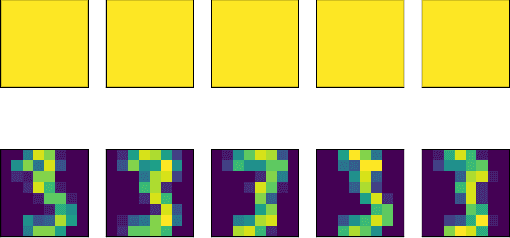
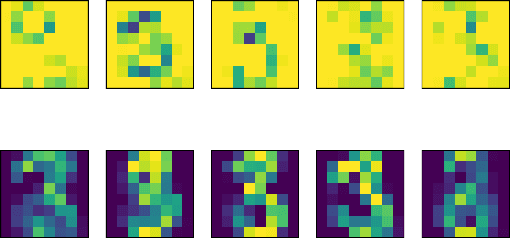
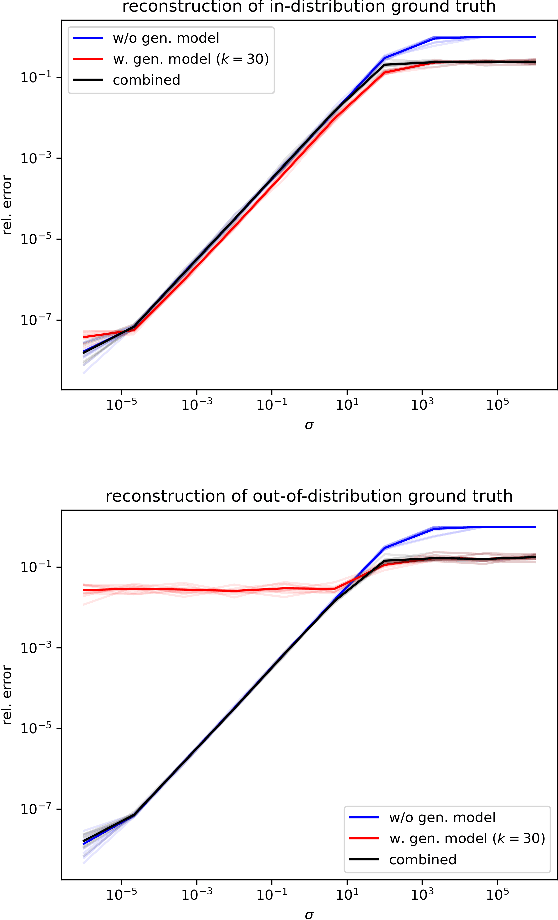
Abstract:In phase retrieval and similar inverse problems, the stability of solutions across different noise levels is crucial for applications. One approach to promote it is using signal priors in a form of a generative model as a regularization, at the expense of introducing a bias in the reconstruction. In this paper, we explore and compare the reconstruction properties of classical and generative inverse problem formulations. We propose a new unified reconstruction approach that mitigates overfitting to the generative model for varying noise levels.
CodEx: A Modular Framework for Joint Temporal De-blurring and Tomographic Reconstruction
Nov 11, 2021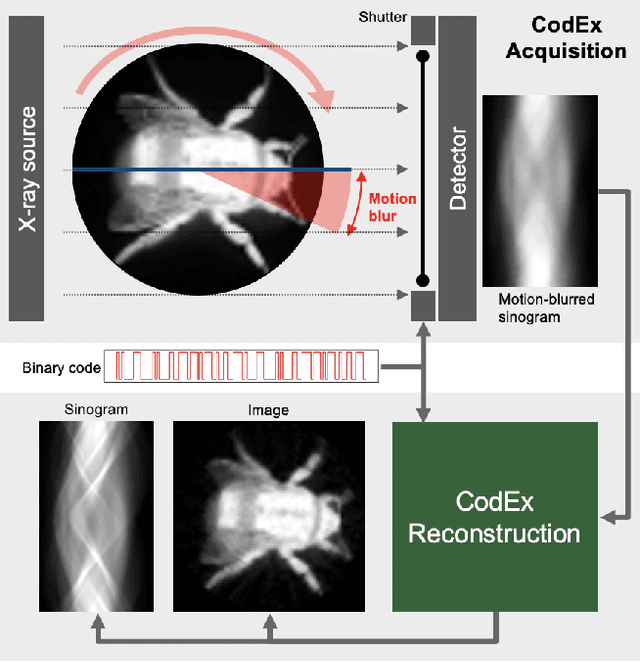
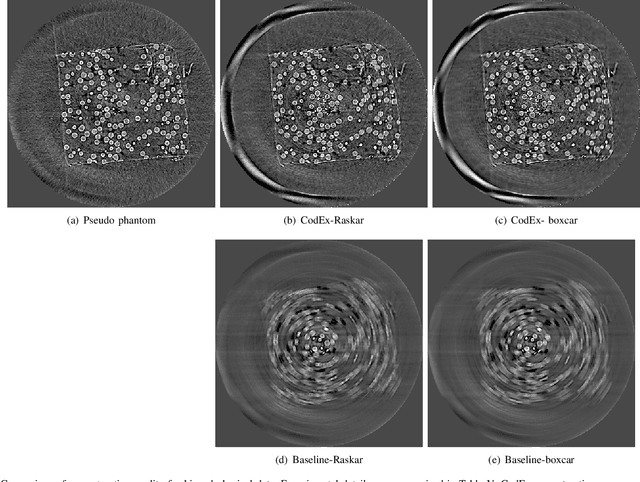
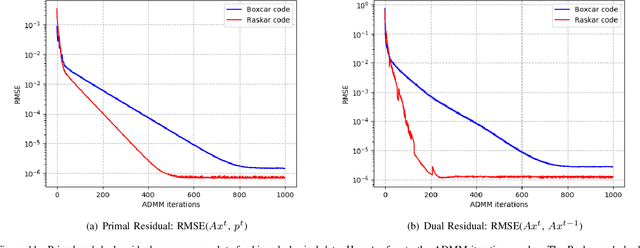
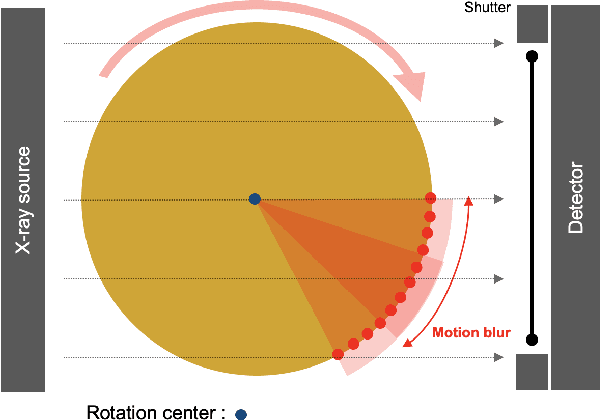
Abstract:In many computed tomography (CT) imaging applications, it is important to rapidly collect data from an object that is moving or changing with time. Tomographic acquisition is generally assumed to be step-and-shoot, where the object is rotated to each desired angle, and a view is taken. However, step-and-shoot acquisition is slow and can waste photons, so in practice fly-scanning is done where the object is continuously rotated while collecting data. However, this can result in motion-blurred views and consequently reconstructions with severe motion artifacts. In this paper, we introduce CodEx, a modular framework for joint de-blurring and tomographic reconstruction that can effectively invert the motion blur introduced in fly-scanning. The method is a synergistic combination of a novel acquisition method with a novel non-convex Bayesian reconstruction algorithm. CodEx works by encoding the acquisition with a known binary code that the reconstruction algorithm then inverts. Using a well chosen binary code to encode the measurements can improve the accuracy of the inversion process. The CodEx reconstruction method uses the alternating direction method of multipliers (ADMM) to split the inverse problem into iterative deblurring and reconstruction sub-problems, making reconstruction practical to implement. We present reconstruction results on both simulated and experimental data to demonstrate the effectiveness of our method.
Scalable and accurate multi-GPU based image reconstruction of large-scale ptychography data
Jun 14, 2021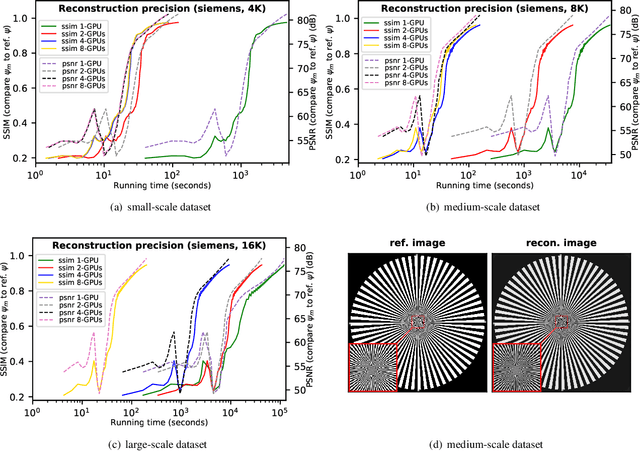
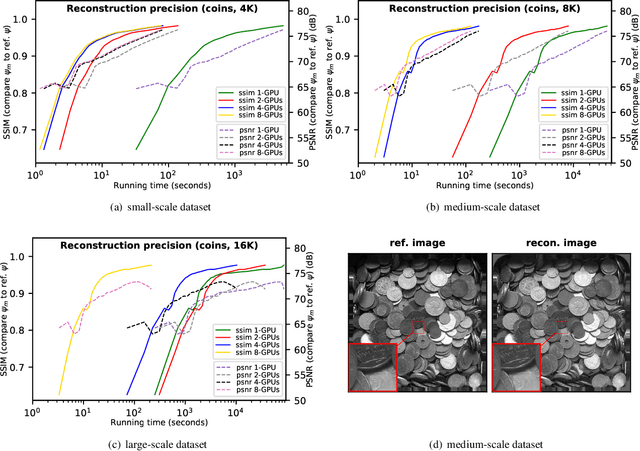
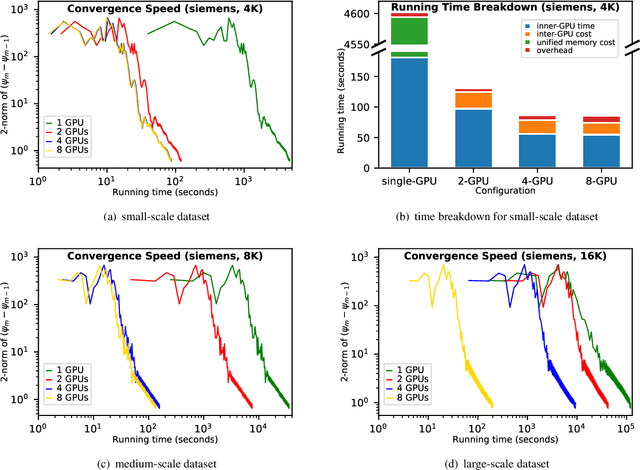
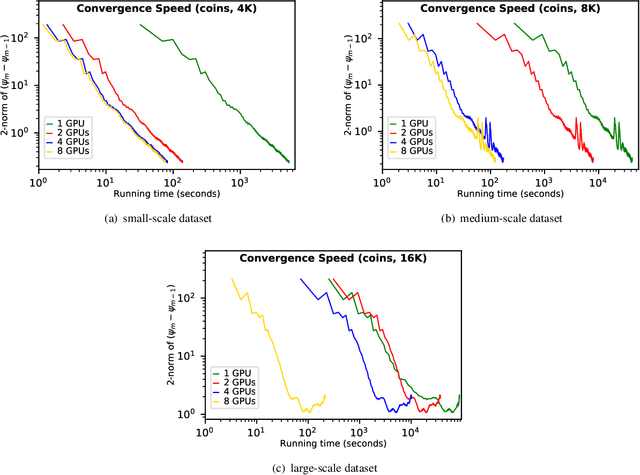
Abstract:While the advances in synchrotron light sources, together with the development of focusing optics and detectors, allow nanoscale ptychographic imaging of materials and biological specimens, the corresponding experiments can yield terabyte-scale large volumes of data that can impose a heavy burden on the computing platform. While Graphical Processing Units (GPUs) provide high performance for such large-scale ptychography datasets, a single GPU is typically insufficient for analysis and reconstruction. Several existing works have considered leveraging multiple GPUs to accelerate the ptychographic reconstruction. However, they utilize only Message Passing Interface (MPI) to handle the communications between GPUs. It poses inefficiency for the configuration that has multiple GPUs in a single node, especially while processing a single large projection, since it provides no optimizations to handle the heterogeneous GPU interconnections containing both low-speed links, e.g., PCIe, and high-speed links, e.g., NVLink. In this paper, we provide a multi-GPU implementation that can effectively solve large-scale ptychographic reconstruction problem with optimized performance on intra-node multi-GPU. We focus on the conventional maximum-likelihood reconstruction problem using conjugate-gradient (CG) for the solution and propose a novel hybrid parallelization model to address the performance bottlenecks in CG solver. Accordingly, we develop a tool called PtyGer (Ptychographic GPU(multiple)-based reconstruction), implementing our hybrid parallelization model design. The comprehensive evaluation verifies that PtyGer can fully preserve the original algorithm's accuracy while achieving outstanding intra-node GPU scalability.
 Add to Chrome
Add to Chrome Add to Firefox
Add to Firefox Add to Edge
Add to Edge